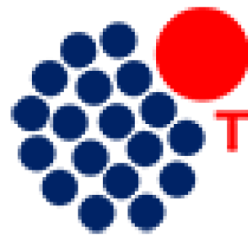If the model finds a pattern – say, that the index has a 60% probability of making an upward move at 11.15 am – then you can use that information to open positions for profit. The way quantitative trading models function can best be described using an analogy. Consider a weather report in which the meteorologist forecasts a 90% chance of rain while the sun is shining.
Mean reversion is a financial theory that posits that prices and returns have a long-term trend. By removing emotion from the selection and execution process, it also helps alleviate some of the human biases that can often affect trading. Instead of letting emotion dictate whether to keep a position open, quants can stick to data-backed decision making.
- Note that annualised return is not a measure usually utilised, as it does not take into account the volatility of the strategy (unlike the Sharpe Ratio).
- The dotcom bubble proved to be a turning point, as these strategies proved less susceptible to the frenzied buying – and subsequent crash – of internet stocks.
- These parameters are programmed into a trading system to take advantage of market movements.
- As a retail practitioner HFT and UHFT are certainly possible, but only with detailed knowledge of the trading “technology stack” and order book dynamics.
However, quantitative trading is becoming more commonly used by individual investors. The risks of loss from investing in CFDs can be substantial https://www.forex-world.net/software-development/what-is-sdlc-understand-the-software-development/ and the value of your investments may fluctuate. CFDs are complex instruments and come with a high risk of losing money rapidly due to leverage.
For retail traders, leaving a system to run without excessive tinkering can be a major part of managing risk. Backtesting involves applying the strategy to historical fooled by randomness by nassim taleb data, to get an idea of how it might perform on live markets. Quants will often use this component to further optimise their system, attempting to iron out any kinks.
Join the QSAlpha research platform that helps fill your strategy research pipeline, diversifies your portfolio and improves your risk-adjusted returns for increased profitability. Discover the range of markets and learn how they work – with IG Academy’s online course. If it finds that the pattern has resulted in a move upwards 95% of the time in the past, your model will predict a 95% probability that similar patterns will occur in the future. Discover its purpose, who files it, and its impact on health account distributions.
What Do Quant Traders Really Do?
The advancement of computer-aided algorithmic trading and high-frequency trading means there is a huge amount of data to be analyzed. In essence, a quant trader needs a balanced mix of in-depth mathematics knowledge, practical trading exposure, and computer skills. An aspiring quant trader needs to be exceptionally skilled and interested in all things mathematical. In addition to an advanced degree, a quant should also have experience and familiarity with data mining, research methods, statistical analysis, and automated trading systems. More complex approaches involve combining multiple parameters, such as technical analysis, value stocks, and fundamental analysis, to select a diverse portfolio of stocks aimed at maximizing profits. Hedge funds, high-frequency trading firms, algorithmic trading platforms, and statistical arbitrage desks frequently use these techniques, employing rapid order execution with short-term investment horizons.
Quantitative trading summed up
Algorithmic (algo) traders use automated systems that analyse chart patterns then open and close positions on their behalf. Quant traders use statistical methods to identify, but not necessarily execute, opportunities. While they overlap each other, these are two separate techniques that shouldn’t be confused. Quantitative trading works by using data-based models to determine the probability of a certain outcome happening.
Sophisticated algorithms are used to lower the cost of every trade – after all, even a successful plan can be brought down if each position costs too much to open and close. HFT systems are fully automated by their nature – a human trader can’t open and close positions fast enough for success. With a strategy in place, the next task is to turn it into a mathematical model, then refine it to increase returns and lower risk.
We and our partners process data to provide:
The required skills to start quant trading on your own are mostly the same as for a hedge fund. You’ll need exceptional mathematical knowledge, so you can test and build your statistical models. You’ll also need a lot of coding experience to create your system from scratch. Most firms hiring quants will look for a degree in maths, engineering or financial modelling.
For HFT strategies in particular it is essential to use a custom implementation. Learn why they matter, their historical roots, and find real-world examples. Get answers to frequently asked questions about Eurodollars and understand their unique role in the global financial landscape.
A momentum strategy attempts to exploit both investor psychology and big fund structure by “hitching a ride” on a market trend, which can gather momentum in one direction, and follow the trend until it reverses. https://www.topforexnews.org/brokers/retail-fx-broker-forexct-has-asic-license/ Find out more about IG’s APIs, which enable you to get live market data, view historical prices and execute trades. You can even use an IG demo account to test your application without risking any capital.
